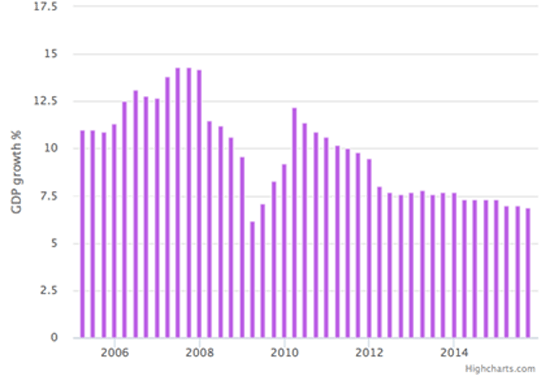Last week, I wrote about the massive pollution problems in China and the gigantic investment opportunity in the cleanup. However, China is a volatile, dangerous place to invest, and there is a wrong way and a right way to do so.
Where do you stand on the Chinese economic debate? Is the China economy decelerating so fast that it will pull the rest of the global economy down with it? Or do you think that the reports of China’s economic death are greatly exaggerated?
No question, China is not growing at the breakneck pace that it has been.

China’s GDP growth slid to 6.9% in the third quarter, the slowest pace of growth since the depths of the 2009-09 Financial Crisis. That’s according to China’s National Bureau of Statistics, whose numbers are always highly massaged.
How massaged? That’s open for interpretation, but a recent Wall Street Journal survey of 64 economists found that 96% of them believe those GDP numbers don’t “accurately reflect the state of the Chinese economy.”

In other words, China’s economy is likely much weaker than the headlines suggest.
However, 6.9% (or slightly lower) is nothing to sneeze at, and China’s leaders are very committed to keeping the country’s economy on track.
“We propose to achieve the goal of creating a ‘moderately prosperous society’ by 2020, which requires annual economic growth of at least 6.5% over the next five years,” Chinese Premier Li Keqiang said.
The dangerous reality is that some parts of the Chinese economy are rapidly shrinking and are accidents waiting to happen.

In particular, I am talking about Chinese factories and Chinese exporters.
China is in the middle of a transformation from a manufacturing, export-based economy into a consumer-driven economy, like the US.
As with any major economic shift, there will be winners and losers.
The chart below from my friends at US Global Funds clearly shows where the growth is: the services industry.














Leave A Comment